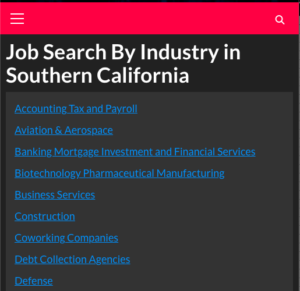Introduction to Ad Copy
Ad copy is the written text used in advertisements to capture the audience’s attention, convey a brand message, and encourage users to take a specific action. Whether on Google search results, social media platforms, or display ads, ad copy plays a crucial role in reaching potential customers and influencing their buying decisions. Quality ad copy should be clear, compelling, and relevant to the audience’s needs. It is often short, but every word counts, as it must quickly capture attention and entice the viewer to click.
Key Components of Good Ad Copy
- Headlines: The headline is often the first (and sometimes the only) element the user sees. A strong headline grabs attention and makes users want to learn more.
- Call-to-Action (CTA): CTAs are phrases designed to encourage users to take a specific action, like “Buy Now,” “Learn More,” or “Get Started.” A clear and persuasive CTA drives conversions.
- Benefits-Focused Language: Good ad copy highlights the benefits of a product or service rather than just its features. Benefits speak to the audience’s needs and motivations, making the ad more relatable.
- Relevant Keywords: Using keywords relevant to the audience’s search intent ensures the ad reaches the right people, enhances relevance, and boosts visibility on search engines.
The Importance of Ad Copy in SEO and SEM
Good ad copy does more than just attract attention; it plays a vital role in both SEO (Search Engine Optimization) and SEM (Search Engine Marketing). Here’s how:
How Ad Copy Enhances SEO
While ad copy itself isn’t directly tied to SEO in organic rankings (since it’s typically linked to paid ads), the quality of ad copy can indirectly support SEO efforts by increasing traffic and engagement on a website. Here are a few ways it influences SEO:
- Increases Click-Through Rate (CTR): Search engines like Google consider the CTR of a link as a ranking factor. When an ad has compelling copy, users are more likely to click on it, which signals to search engines that the link is relevant and valuable, indirectly benefiting SEO.
- Drives Engagement Metrics: When users click through to a page and engage with the content, it can lead to higher dwell time and lower bounce rates—two metrics that positively influence SEO rankings. Good ad copy that attracts the right audience can improve these metrics, signaling quality and relevance to search engines.
- Encourages Social Sharing: Ad copy that resonates with users can lead to increased social sharing, which creates backlinks and referral traffic. These social signals, while indirect, contribute positively to a website’s SEO.
How Ad Copy Impacts SEM
For SEM campaigns (especially those using Google Ads or Bing Ads), the quality of ad copy is critical to success. Quality ad copy contributes to SEM performance in several ways:
- Improves Quality Score: Platforms like Google Ads assign a Quality Score to ads based on their relevance, expected CTR, and landing page experience. High-quality ad copy that aligns with keywords and the landing page content increases the Quality Score. This can result in lower costs per click and better ad placement.
- Increases CTR and Conversion Rate: Effective ad copy draws users who are more likely to convert, improving both CTR and conversion rates. This can lower the cost-per-acquisition (CPA) and maximize return on investment (ROI) for SEM campaigns.
- Reaches a Targeted Audience: Keywords in ad copy help target specific user intent, meaning ads appear in front of the right audience at the right time. This leads to higher engagement and better campaign performance.
- Enhances A/B Testing Capabilities: With SEM, A/B testing various ad copies can help advertisers determine which message resonates best with their audience. Good ad copy makes it easier to test different headlines, descriptions, and CTAs, allowing marketers to optimize campaigns for better results over time.
Best Practices for Writing Effective Ad Copy
- Keep It Concise and Clear: With limited character space, it’s crucial to communicate clearly and avoid jargon or complex terms.
- Focus on User Benefits: Always highlight what the user gains from clicking on the ad, such as savings, convenience, or unique value.
- Use Actionable Language: Strong verbs and a direct CTA encourage users to take action right away, leading to higher conversions.
- Test and Refine: Continuously test ad copy variations to identify what resonates best with your target audience.
- Incorporate Keywords Naturally: Keywords improve ad relevance and alignment with search intent. Use them naturally in the headline or description to increase the ad’s quality score and visibility.



